Figures & data
Figure 1. Sampling area. (a) Northern part of Iran: the red dot indicates Behshahr city in Mazandaran province; (b) Pasand forest, near Behshahr; (c) Imamzadeh Yusuf, near Behshahr.
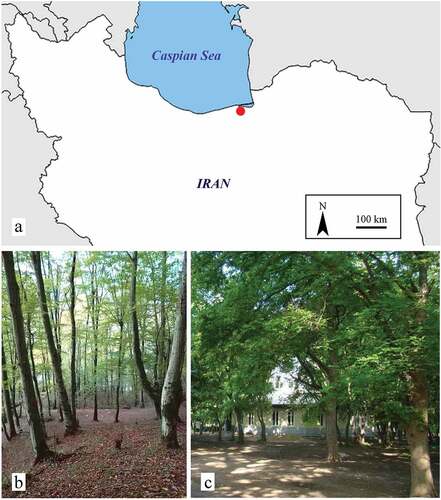
Figure 2. Acerentulus iranicus sp. nov. (interference contrast microscope). (a) Maxillary gland (side view); (b) Thorax (dorso-lateral view): arrows indicate sl pores; (c) Mesosternum; (d) Metasternum; (e) Abdominal sternites I–III: arrows indicate abdominal appendages. Scale bars 50 μm. Figures (a, e): holotype. Figures (b–d): paratype.
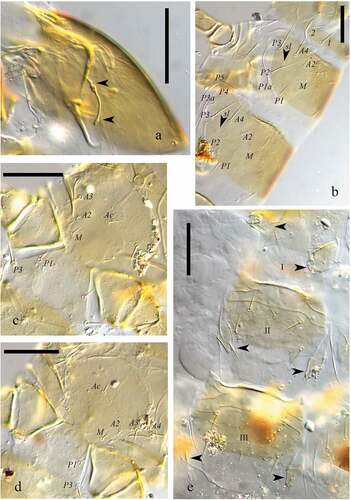
Figure 3. Acerentulus iranicus sp. nov. Paratypes (interference contrast microscope). (a) Tergites VI–VII: arrows indicate pores; (b) Tergites VIII–XII: arrow indicates pore; (c) Sternites VI–VII: arrows indicate pores and the granular area between tergite and pleurite VI (Ple); (d) Sternites VIII–XII: arrow indicates pore; (e) Detail of Tergite VIII: arrows indicate psm pore and comb VIII; (f) Detail of female squama genitalis: arrows indicate the acrostyles. Scale bars 50 μm (a–d) - 20 μm (e, f).
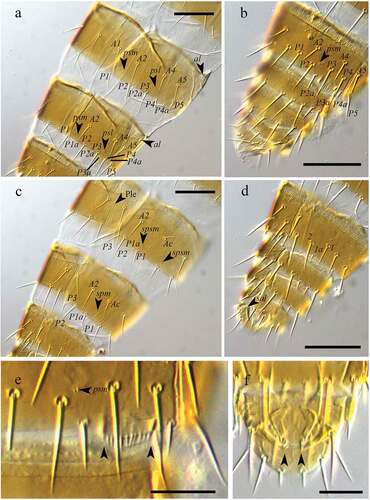
Figure 4. Acerentulus iranicus sp. nov. (a) Head, lateral view; (b) Maxillary palpus; (c) Labial palpus; (d) Pseudoculus; (e) Canal of maxillary gland; (f) Foretarsus, exterior view; (g) Foretarsus, interior view; (h) Pro, meso and metanotum; (i) Prosternum; (l) Mesosternum; (m) Metasternum. Arrows indicate pores. Figures (a‒h): holotype; Figures (i‒m): paratypes. Scale bars: 50 μm (a, f‒m) - 20 μm (b‒e).
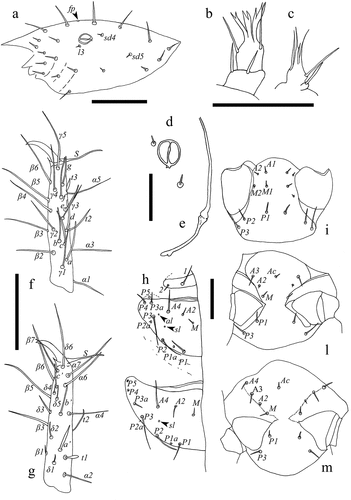
Figure 5. Acerentulus iranicus sp. nov. (a) Tergites V–VII; (b) Sternites V–VII; (c) Tergites VIII–XII; (d) Sternites VIII–XII. (e) Abdominal appendage II; (f) anterior margin of pleurite VII; (g) Comb on abdominal tergite VIII; (h) female squama genitalis. Arrows indicate pores. Figures (a, e, f): holotype; Figures (b, c, d, g, h): paratypes. Scale bars: 50 μm (a‒d) - 20 μm (e‒h).
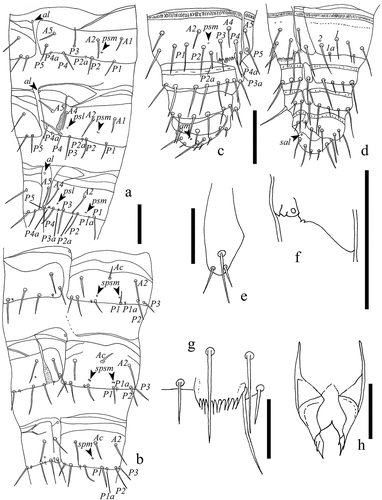
Table I. Acerentulus iranicus sp. nov. chaetotaxy
Table II. Acerentulus iranicus sp. nov. porotaxy
Figure 6. Acerentomon sp. 1. male (interference contrast microscope). (a) Head (dorsal view): arrow indicates the frontal pore (fp); (b) Foretarsus (exterior side): arrows indicate the ends of sensillum b; (c) Tergites VIII‒XII: arrows indicate granulations behind the striate band (gr), pores (psm and am) and comb VIII (comb); (d) Sternites VIII‒XII: arrows indicate granulations behind the striate band (gr), the anomalous posterior seta on sternite VIII (an) and the toothed posterior margin of pleurite VIII (pl); (e) Detail of the maxillary gland; (f) Detail of pleural pectine VI. Scale bars: 50 μm (a, c, d) - 20 μm (b, e, f).
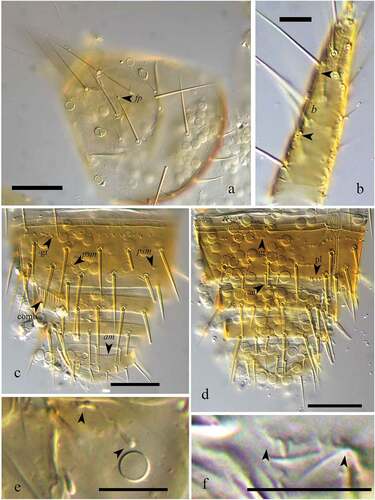
Figure 7. Acerentomon sp. 1. male. (a) Detail of rostrum and labial setae; (b) Labial palp; (c) Male squama genitalis. Scale bars: 50 μm (a, c) - 20 μm (b).
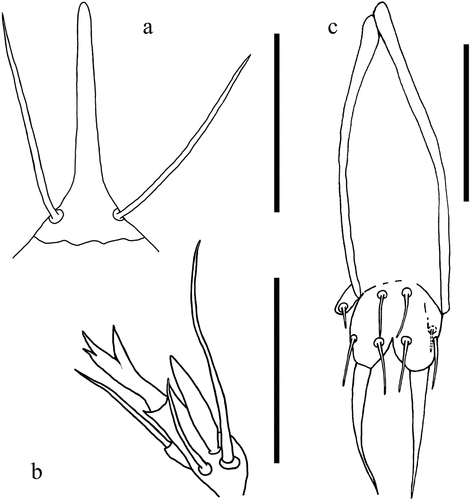
Table III. Acerentomon sp. 1 chaetotaxy
Table IV. Acerentomon sp. 1 porotaxy
